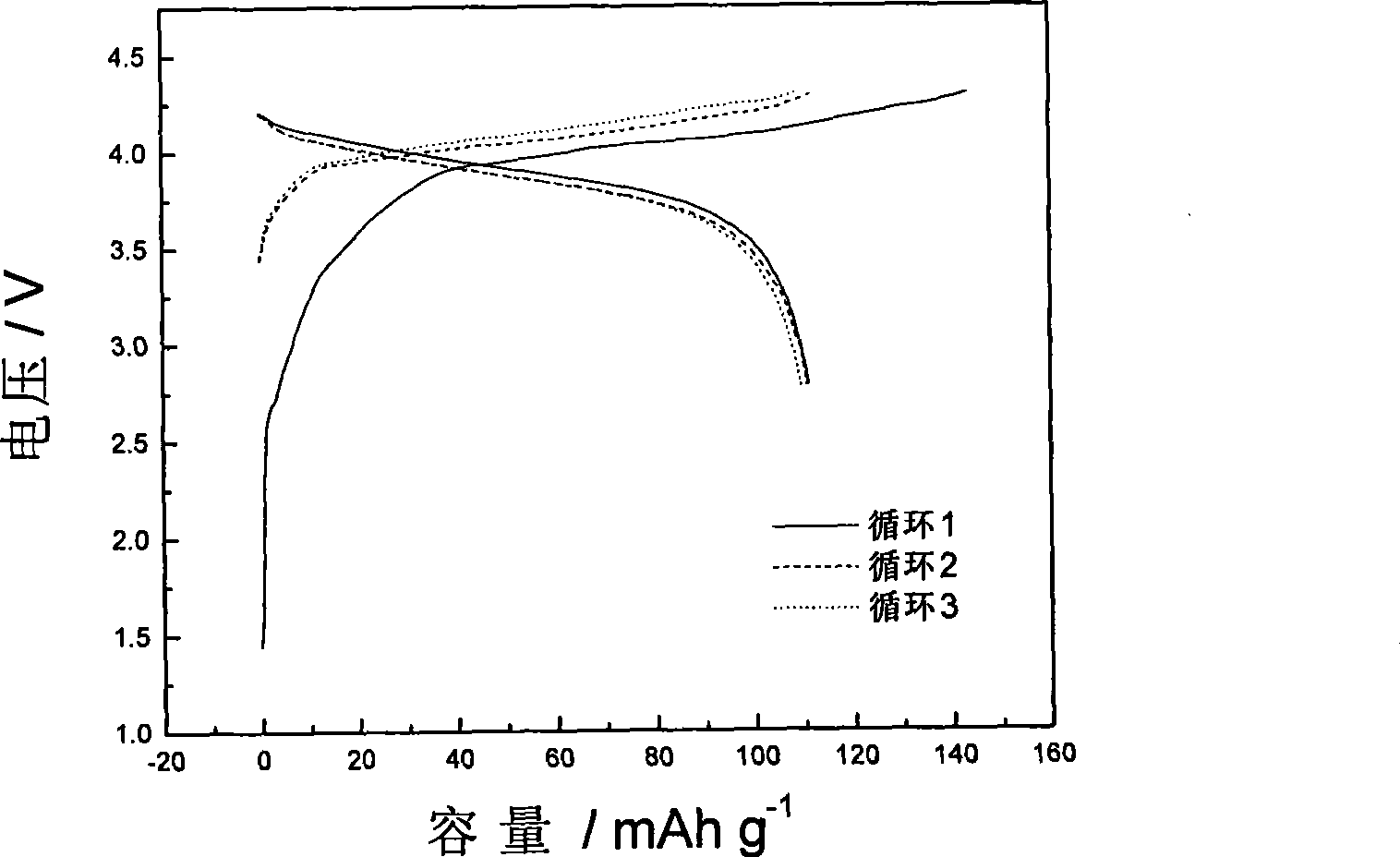Electrolyte film and porous substrate and preparation thereof, lithium ion secondary battery
A secondary battery, electrolyte membrane technology, applied in secondary batteries, battery pack parts, circuits, etc., can solve the problems of poor electrolyte affinity, easy electrolyte leakage, and battery performance degradation, and achieve liquid absorption performance. Good, improve cycle performance and safety performance, improve the effect of liquid absorption capacity
- Summary
- Abstract
- Description
- Claims
- Application Information
AI Technical Summary
Problems solved by technology
Method used
Image
Examples
Embodiment 1
[0035] (1) Preparation of polyvinylidene fluoride nonwoven fabric
[0036] Stir 10g of polyvinylidene fluoride with a weight average molecular weight of 530,000, 10g of acetone, and 80g of N,N-dimethylacetamide at 55°C to prepare a polyvinylidene fluoride spinning solution, and prepare the prepared polyvinylidene fluoride The ethylene spinning solution was injected into the electrospinning equipment, and the aluminum foil was used as the receiving screen, and the electrospinning was carried out under the conditions of a voltage of 60kV and a distance from the spinneret to the receiving screen of 30cm, and polyvinylidene fluoride with an average fiber diameter of 115nm was obtained. Non-woven fabric composed of vinyl fibers. The film thickness of the obtained polyvinylidene fluoride nonwoven fabric is about 50 μm, and the porosity is about 80%;
[0037] (2) Modification of polyvinylidene fluoride nonwoven fabric
[0038] ① For electron beam irradiation of polyvinylidene fluor...
Embodiment 2
[0046] (1) Preparation of polyvinylidene fluoride nonwoven fabric
[0047] Stir 13g of polyvinylidene fluoride with a weight average molecular weight of 275,000, 12g of acetone, and 75g of N,N-dimethylacetamide at 55°C to form a polyvinylidene fluoride spinning solution, and inject the polyvinylidene fluoride spinning solution into In the electrospinning equipment, the aluminum foil is used as the receiving screen, and the electrospinning is carried out under the condition of the voltage of 60kV and the distance from the spinneret to the receiving screen of 20cm, and the polyvinylidene fluoride fiber with an average fiber diameter of 137nm is obtained. spinning. The film thickness of the obtained polyvinylidene fluoride nonwoven fabric is about 65 μm, and the porosity is about 70%;
[0048] (2) Modification of polyvinylidene fluoride nonwoven fabric
[0049] ① For electron beam irradiation of polyvinylidene fluoride non-woven fabrics:
[0050] Arrange polyvinylidene fluorid...
Embodiment 3
[0055] (1) Preparation of polyvinylidene fluoride nonwoven fabric
[0056] Stir 11g of polyvinylidene fluoride with a weight average molecular weight of 534,000, 10g of acetone, and 79g of N,N-dimethylacetamide at 55°C to form a polyvinylidene fluoride spinning solution, and prepare the prepared polyvinylidene fluoride The spinning liquid is injected into the electrospinning equipment, and the aluminum foil is used as the receiving screen, and the electrospinning is carried out under the conditions of a voltage of 60kV and a distance of 25cm from the spinneret to the receiving screen to obtain polyvinylidene fluoride fibers with an average fiber diameter of 126nm The non-woven fabric composed of polyvinylidene fluoride has a film thickness of about 80 μm and a porosity of about 75%;
[0057] (2) Modification of polyvinylidene fluoride nonwoven fabric
[0058] ①Irradiation of polyvinylidene fluoride nonwoven fabric:
[0059] Arrange polyvinylidene fluoride nonwovens in the ai...
PUM
| Property | Measurement | Unit |
|---|---|---|
| thickness | aaaaa | aaaaa |
| thickness | aaaaa | aaaaa |
| diameter | aaaaa | aaaaa |
Abstract
Description
Claims
Application Information
 Login to View More
Login to View More - R&D
- Intellectual Property
- Life Sciences
- Materials
- Tech Scout
- Unparalleled Data Quality
- Higher Quality Content
- 60% Fewer Hallucinations
Browse by: Latest US Patents, China's latest patents, Technical Efficacy Thesaurus, Application Domain, Technology Topic, Popular Technical Reports.
© 2025 PatSnap. All rights reserved.Legal|Privacy policy|Modern Slavery Act Transparency Statement|Sitemap|About US| Contact US: help@patsnap.com


